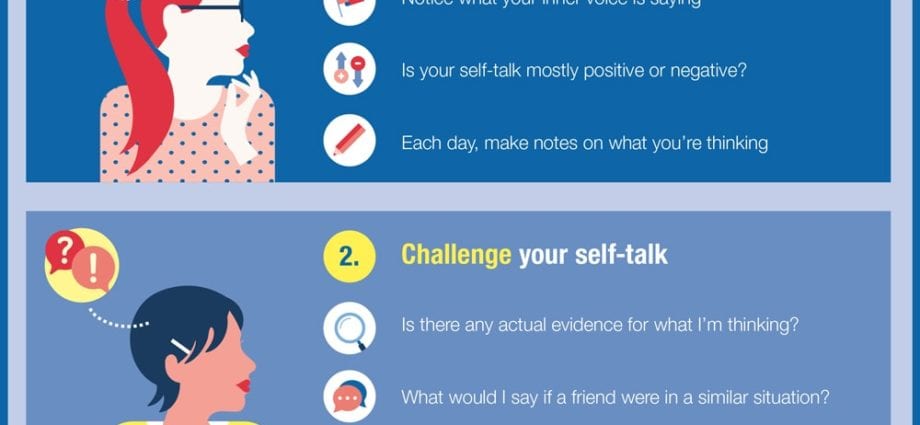Can’t figure out how to make casual strength training or walking a routine ritual? Exercise is critical to health and wellness, but most of us – myself included – have difficulty motivating us to make fitness a part of our daily lives. Common sense and willpower are not always enough (or rather, almost never enough) to change your lifestyle and say: “Despite the rain, I will go to the gym.”
Fortunately, economists and psychologists have been studying for a long time how to “program” yourself to do your favorite things on a regular basis. Here are some of the best strategies.
1. Reward yourself
Of course, some people are stimulated by vague goals like “health promotion” or “weight control”. But if that doesn’t work for you, journalist Charles Dewig, author of The Power of Habit: Why We Do What We Do in Life and Business, recommends making the benefits of exercise more tangible, such as indulging yourself with a serving of your favorite food. or an episode of your favorite TV show.
It describes a neurological process called the habit loop, which includes a signal that triggers certain behaviors (for example, when you put your running shoes near a threshold), a ritual (the workout itself), and then a reward. “The reward is very powerful because your brain can catch on to it and signal that the cause is worthwhile,” he explains. “This increases your chances of the procedure becoming familiar.”
Over time, motivation will come from within as the brain begins to associate sweat and pain with the release of endorphins. These chemicals released in the brain are responsible for positive emotions: they make us feel lifted after a good workout in the gym.
When you get your brain to understand that training is a reward in itself, you don’t even need additional encouragement. In my case, this happy moment came after three months of continuous violence against myself. But now I go to the gym for a dose of positive, and if I work out in the morning, then literally all day long I smile, those around me seem beautiful and wonderful, and life is wonderful!
2. Conclude a public contract
You can make promises to yourself all day or a whole year, but research shows that we are more likely to fulfill them when they are given in public – for example, in front of friends.
You can raise the stakes even higher by “signing a contract” and promising to pay a buddy every time you miss Pilates. “This is a common theory of value change,” explains Jeremy Goldhaber-Fiebert, Ph.D., an assistant professor of medicine at Stanford University who studies the motivation for healthy decisions. – I say that I’m going to make a commitment to do something for a certain time, for example, do sports for 30 minutes three times a week for 12 weeks. If I do not do this, I will be obliged to pay some kind of fine, in cash or in the form of a feeling of shame in front of friends who see that I do not keep my word. “
In studies involving people who signed online contracts through stickk.com, Goldhaber-Fiber and colleagues found that those who signed longer-term contracts fulfilled their training obligations longer than those who agreed to shorter ones. terms.
3. Cultivate Positive Thinking
Positive thinkers have long talked about visualizing the benefits of behavior as a motivational strategy. For example, when I make the decision to get out of bed so as not to be late for the gym, a picture of me with clearly drawn abs instead of fat around the waist helps me.
But such fantasies of beauty are only effective when combined with more realistic methods, says Gabriel Oettingen, Ph.D., a psychologist at New York University and author of Rethinking Positive Thinking: Inside the New Science of Motivation.
In particular, she calls this method “psychological contrast”: after you have identified your desires and visualized the results, you must determine what is holding you back. In one study of several female students who claimed they wanted to eat less unhealthy foods, each girl was asked to imagine the benefits of snacking on healthy snacks. Those girls who were able to clearly understand what exactly prevents them from eating right, and firmly decided to snack only on fruits, were most successful in achieving the goal.
Feeling too tired to go to the gym after work? Once you visualize the obstacle, you can figure out what you can do to overcome it and make a plan of action. For example, you can switch to morning or lunch workouts or go to the gym right after work without going home.
4. Get paid
Still not working? Maybe it’s time to move on to cash payment. A study that looked at exercise and monetary incentives found that people who were paid $ 100 to go to the gym were twice as likely to go there. It’s unlikely that anyone would really pay you to go to the gym, so you can try the Pact app, where the user community literally pays you to stick to your schedule. If you miss a workout, you will automatically give the app access to your credit card or PayPal account. When you reach your goal, you get paid from a shared wallet funded by you and other offenders.
Another method that works for me is a personal trainer. Better one with which it is interesting to study. For me, the opportunity to communicate during training is an important part of the training, and I always try to find a coach who can tell something unusual and interesting.
In general, whichever method of motivation you choose should be effective for only a few months – until one day you realize that you simply cannot imagine your daily life without training. So you have reached a state of addiction! Agree that depending on regular exercise is much better than ice cream, chocolate or beer.










